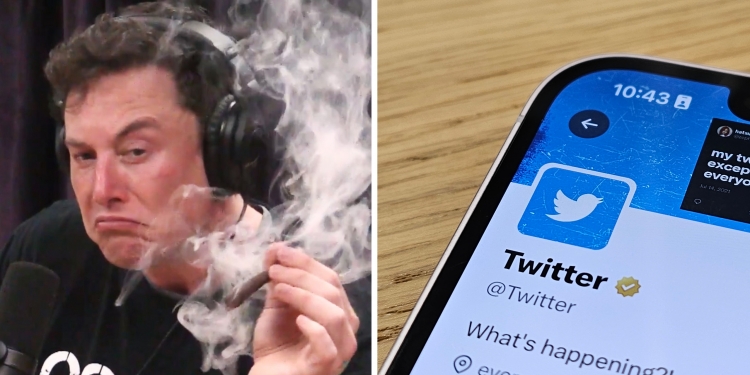Elon Musk is nothing if not a sucker for 2010s meme and frat boy culture. He’s put fart cushions in Teslas, brought an actual kitchen sink to his first day at Twitter’s HQ and swapped Twitter’s bird logo for the “doge” icon. He couldn’t even help himself when he bought the social media platform last year at USD 4.20 (around RM18.55) per share—amounting to a total of USD 44 billion (around RM194.3 billion).
So of course this eccentric billionaire has decided that having missed the original date to pull Twitter’s old verification system on April 1, he’s now given a deadline of removing all blue ticks from “legacy” verified users on April 20…or 4/20.
Final date for removing legacy Blue checks is 4/20
— Elon Musk (@elonmusk) April 11, 2023
Aside from pandering to potheads everywhere, the new deadline is the long-awaited litmus test for Twitter’s strategy of getting users to pay for verification. Musk has previously said that starting April 15, only verified users will show up in the For You feed and be allowed to vote in polls, claiming it’s the “only realistic way to address advanced AI bot swarms taking over.” He has also claimed that there was “so much corruption in the past with legacy checkmarks.”
Right now, anyone could buy a Twitter Blue subscription for RM35 per month or RM369 per year. This will not only grant them the blue checkmark but also let them undo or edit tweets, upload longer and higher-quality videos, view 50% fewer ads and enjoy a boost in ranking for both replies and search results.
Companies that want these benefits will have to subscribe to become a verified organisation, costing a whopping RM4,500 a month. This will give them gold checkmarks and the ability to add affiliates using the verified organisation portal. They will also get access to premium support for timely support and escalations to issues such as those related to onboarding, removing or adding affiliates, billing or impersonations.
Some organisations, such as the New York Times, have indicated that they will not pay the high price of verification. Musk responded to NYT’s tweet by stripping the publication of its blue checkmark, although many of its other affiliates continue to feature blue and even gold checkmarks.








